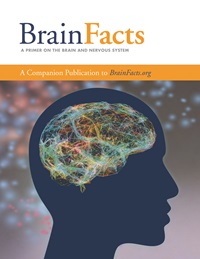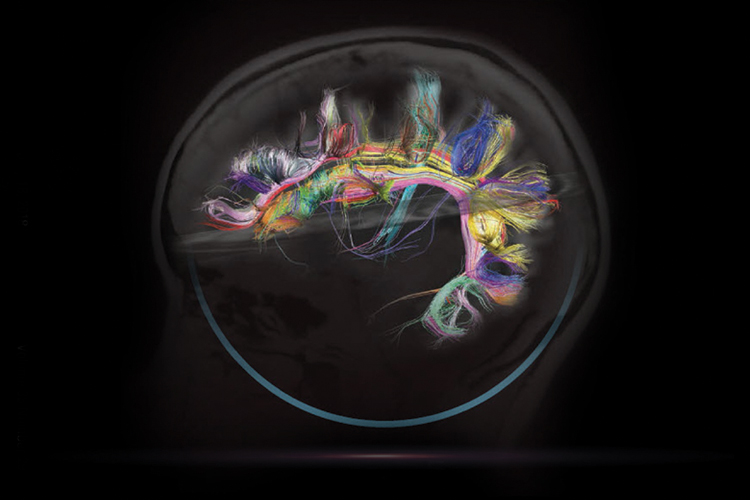
Eighth Edition of the Brain Facts Book Looks to Expand Public Knowledge of Neuroscience
The human brain is the most complex biological structure in the known universe. Its roughly 86 billion nerve cells power all of our thoughts, perceptions, memories, emotions, and actions. It is what inspires us to build cities and compels us to gaze at the stars — in short, it is what makes us human.
Making sense of the brain, however, can be intimidating. For the past 25 years, SfN has been making it less so by helping students and nonscientists to understand and appreciate the brain through its publication of Brain Facts: A Primer on the Brain and Nervous System. In June, SfN published the eighth edition of the Brain Facts book, which inspired and is a companion publication to BrainFacts.org.
“The book is very complementary to the many interactive resources currently available on BrainFacts.org, including the 3D model of the brain,” said John H. Morrison, editor-in-chief of BrainFacts.org. “It is our hope that the experiences we’ve created on the site and in the book will continue to nurture curiosity about the brain and nervous system and embrace the latest, innovative ways of learning.”

Brain Facts saw its beginnings as a 32-page booklet published in 1990. The eighth edition has expanded to 136 pages and 18 chapters, including new chapters covering topics such as the teenage brain in development and thinking, planning, and decision-making. The mission of the book remains the same, however: to explore the fundamentals behind the most recent discoveries in neuroscience, to convey the most current understanding about what we know about the brain today, and to address emerging topics in the field.
"Neuroscience is a field so vast that we still don't know its limits and probably never will,” said Tashara Jones, an SfN member and a student at the Howard University College of Medicine. An active participant in SfN-sponsored outreach events, Jones has seen firsthand how excited and overwhelmed students and the general public can become when faced with the topic of neuroscience.
“Learning such a subject can be daunting,” she said. “This book is able to distill an immense amount of information into a much smaller package without losing the detail necessary to learn essential concepts."
The new edition of Brain Facts emphasizes the Core Concepts. Articulated by SfN’s Public Education and Communication Committee (PECC), the Core Concepts are the eight fundamental ideas people need to know about the brain and nervous system. In Brain Facts, they serve as touchstones so that readers can deepen their understanding of the information presented. Throughout the book, icons representing the various Core Concepts allow readers to place knowledge into the wider framework of neuroscience. For example, information about circadian rhythms fits into the context that the brain uses specific circuits to process information, while the role of learning and reward systems in addictive behaviors illustrates the concept that the brain uses inference, emotion, memory, and imagination to make predictions.
“The Core Concepts create a framework for understanding neuroscience,” said Nick Spitzer, distinguished professor of neurobiology and director of the Kavli Institute for Brain and Mind (KIBM) at the University of California, San Diego. Spitzer served as PECC chair when the Core Concepts were developed. “In this new edition of Brain Facts, students and readers have an opportunity to deeply learn about concepts like plasticity and how neurons communicate because examples of those concepts are marked throughout the book.”
The Brain Facts book serves as a valuable resource for secondary school teachers around the world, who have used Brain Facts to develop lesson plans for students ranging from the middle school to high school levels and above. Available to students, teachers, and others as a free download on BrainFacts.org, the Brain Facts book is also the source material for the questions asked in the local and national Brain Bees.
“The Brain Facts book has been a wonderful resource for students and teachers who are excited about neuroscience or preparing for the Brain Bee,” said Benjamin Fiore-Walker, PhD, manager of the Department of Diversity Programs at the American Chemical Society and longtime moderator of the local D.C. Brain Bee. “I am very excited to have the new edition available with up-to-date information about this incredibly dynamic field.” To download the eighth edition of the Brain Facts book, visit BrainFacts.org.





















